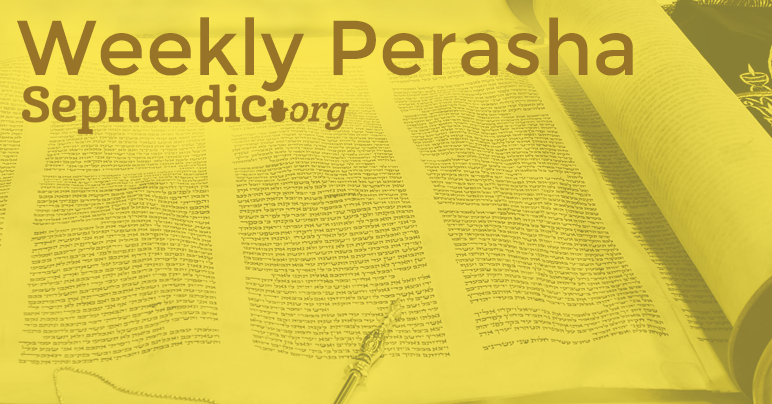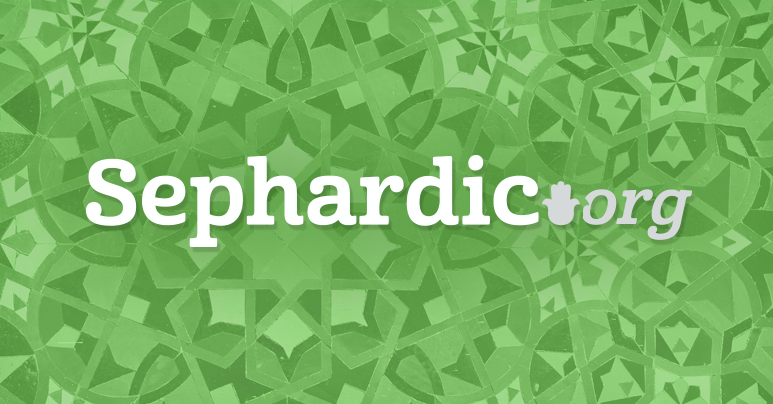
EMOR - SEFIRAT HA’OMER AND HAIRCUTS
Our Parasha includes legislation concerning an obligation to count 49 days from the bringing of the sacrificial Omer on the morrow of the first day of Pesah (the 16th of Nisan) until Shavuot or Matan Torah. 1 This conforms with Hashem's revelation to Moshe during their initial meeting at the burning bush. He advises Moshe that the principal element and the reason why Israel was to be rescued and sent forth out of Egypt -is so that we would accept the Torah and fulfill it. “This shall be the sign for you that I have sent you; when you have brought forth the people out of Egypt, and you shall serve God on this mountain." 2 Our rescue and preparation to receive the Torah would take place in two stages. In the initial stage we find Israel in the perilous state of extreme impurity being sent forth out of Egypt solely out of the kindness of Hashem. As we are taught in Sefer Devarim - "It was because of Hashem's love for you ... He brought you out ... From the power of Par'o king of Egypt." 3 By way of analogy we were a nation "on death row" sent forth from the clutches of extermination. On the night of our release called " the night of protection" the Torah notes that "no dog barked in opposition". 4 Namely, the Satan was not given permission to protest - at least in this initial stage of rescue. This set up the second stage which we can call the 49 Days of Parole where the escapees will be watched and scrutinized to determine if we indeed deserved to be released. These 49 days of the Omer will be a period of Din or judgement as Israel is given the opportunity to rehabilitate ourselves and earn our release. Each year though truly undeserving we are granted through the kindness of the Creator the ability to escape our personal Egypt on the first night of Pesah. This sets up the next stage; the period of parole of the Omer to cleanse ourselves - by building our Midot and climb spiritually in order to receive the Torah anew each year on Shavuot. 5
49 DAYS OF PAROLE - NOT DAYS OF MOURNING
We will now attempt to detail this second stage after our rescue from Egypt leading towards the receiving of the Torah according to the teachings of R. HaAri. It is important to understand this teaching is not only for its theological benefit but also for its legal ramifications. Our tradition is clear that we follow the mystical view when the Talmud is not definitive on any legal or customary matter. 6 According to R. HaAri these 49 days of the Omer are not to be reckoned as those of mourning for the students of R. Akiva. Their death as detailed in Yevamot (62) are the "result" of these days being ones of judgement and parole - and are not its cause! 7 Anyone familiar with the writings of R. HaAri can see that they assert in no uncertain terms that mourning rites have no relation with this period. 8 Even the custom not to take haircuts should not be considered here as a mourning rite. R. Hayyim Kohen of Aleppo writes "All those familiar with the mystical lore ... know the custom not to take haircuts has nothing to do with Avelut". 9 HaRav Hida similarly writes - “The custom not to shave (the head) during the days of the Omer according to the Ari is not due to any consideration of Avelut." 10 The Ben Ish Hai writes “according to the secrets revealed by R. HaAri the restriction to shave (the head) has nothing to do with Avelut". 11 These authorities also reflect the opinion of others and clearly conform with the primary sources in the Kitve HaAri which distance any association of the days of the Omer with mourning. They are rather to be solely associated with the spiritual environment of this second stage - namely with that of Judgement.
REFRAIN FROM TAKING HAIRCUTS -
In our initial explanation we have set forth the claim that according to R. HaAri the 49 days of the Omer are associated with judgement upon Israel. We know of the custom not to take haircuts during this period. According to R. HaAri the hair of the head of normal individuals of Israel relates to Din that should normally be periodically cut or shaved. This removal of din however - should only be performed during times when hesed prevails in the spiritual worlds and not during a period when the supervision of the world is one of judgement. R. Hayyim Vital the primary student of R. HaAri writes "All of the hair are the powers of judgement; therefore it is necessary to cut the hair on the head of ZA ( a spiritual grade associated with man) as noted in the Zohar. This is the secret of shaving the head of the Levi'im." 12 This act to remove Din associated with the hair of the head is limited to times of cosmic hesed. We know that during all periods of Din - R. HaAri was particular not to take action to trim or shave the hair of his head. For any attempt to remove the Din during the time of Din can incur dangerous repercussions on the individual. Hence R. HaAri was particular not to shave the hair of his head during the afternoon or evening hours 13 or during the 3 weeks beginning with the 17th of Tammuz 14 nor during the full 49 day period of the Omer. R. Hayyim Vital notes - "During these 49 days my teacher did not shave his head - rather only on Erev Pesah and Erev Shavuot. He would refrain from shaving his head even on Rosh Hodesh Adar and the 33rd day of the Omer.".. 15 The reason is that the spiritual influence at that time is one of Din until the holiday of Shavuot. (Though it is somewhat mitigated on the 33rd of the Omer) 16 R. Yaakov Semah the editor of the later writings of R. HaAri teaches "The reason (for not taking haircuts) during the Omer is not due to Avelut but rather we do not shave (our heads) because the hair has its spiritual root in Din.." 17 HaRav Hida validates this reasoning of R. HaAri and discounts the assumption of others who associate the period of the Omer with mourning rites. “This custom does not have sufficient foundation or reasoning according to the Peshat as one can plainly see; however according to the way of truth it is necessary that one refrain from shaving ones (head) hair from Pesah eve until Shavuot eve. Taking haircuts on Rosh Hodesh or lag la'omer is not proper according to the mystical lore.. " 18 We can conclude from these and other selected sources 19 that the second stage of 49 days are those related to Din and it is not proper to remove the hair of the head at that time.
RAISING DIN -AS A NAZARITE
If we penetrate a bit more into the writings of R. HaAri we will see that he does not advocate a passive approach to these days of judgement as one is cautioned to do so during the weeks of Ben Hamesarim. 20 Rather during these 49 days we are implored to raise din or judgement from its apparent level back to its source above. This lofty level where Din is to be raised is called spiritually the head of Arikh Anpin or Keter. This is a heightened spiritual level where the name ELHM related to judgement is subsumed in the name of YHVH. As it is written "I am YHVH and there is no ELHM with me." 21 We are told by R. HaAri that we must access and arouse this level above during these 49 days in order for spiritual judgement in its lower form not to take hold during this time as occurred to the students of R. Akiva. 22 We are implored by our sages not to judge or act strictly with others - but look at their actions favorably. Furthermore we are taught that R. Akiva did not expound on the letters - this being the Talmud's coded reference of him not judging others according to the "letter" of the law. Rather he would expound on the tips and crowns of the letters which connotes his attempt to raise Din to its root in Keter. 23 The Nazir manifests this ascent of Din to the level of Keter or the Crown. The hair of his head is thereby transformed and considered holy and need not and should not be removed.24 As Bemidbar 6:5 rules "... the uncut hair that grows on his head is sacred." 25 The period of the Omer warrants us to refrain cutting the hair of our head -in a manner reminiscent of the Nazir. This lofty ascent to the head of Arikh Anpin is said to have seven spiritual levels of which the one known as עמר נקי - Omar Neke is thereby aroused. 26 Daniel describes this lofty level as the Ancient of Days having his hair as עמר נקי - white wool. 27 This is noted in the writings of R. HaAri "For it is known that there is a Tikun in the spiritual skull which is called עמר נקי - which is aroused during these days. 28 R. Yaakov Semah comments that via our speech and counting of the Omer we initiate this lofty level of the hair of Arikh to manifest below. 29 This we know is a necessary precursor to Shavuot, Matan Torah and the revelation at Har Sinai.
IN SUMMARY
The 49 days of the Omer require us to act with our fellow man in a manner beyond the letter of the law. The custom not to take haircuts until Erev Shavuot reflects this objective. We grow the hair of our heads - which represents Din - and elevate it via the perfecting of our Midot and counting of the Omer to the level of the hair of the Nazir which is called Kodesh. This will arouse the lofty level known as עומר נקי - to manifest in the worlds and to usher in the revelation on Shavuot. It is admittedly unclear as to precisely why the Sephardic communities have not as a whole adopted the view of R. HaAri on these matters. 30 Especially considering that R. Hayyim Kohen of Aleppo a student of R. Hayyim Vital surmises that the reason according to the Peshat evolved due a series of errors. 31 It rather behooves us to adopt the customs according to the clear mystical tradition. Namely that this time period is associated with Din that must be elevated and should not be associated with the rites of mourning. Secondly that the custom not to cut one’s hair should extend from Erev Pesah through Erev Shavuot. Finally that facial hair or the beard is not reflective of this spiritual level - hence it is not subject to the customary cutting restrictions as is the hair of the head during these 49 days of the Omer. 32
Shabbat Shalom








